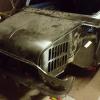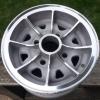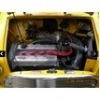Got to be said I can't get my head round what Swift_General has said, or is it just me?
I'm not having a go, I just don't understand it...
The change in chamber volume does depend on the cross sectional area and as said the skim, but also how that CSA changes too, as it does when skimming. As the depth gets shallower the CSA gets smaller too so its the change in the area on a head chamber plus the skim. I can't see how this is worked out to 0.01cc using graph paper or am I missing something?
Cross sectional area has nothing to do with the volume of the chamber unless its a perfect cylinder or am I wrong? And a CSA should not be measured in CC, as CC is a cubic volume measurement not an area, surely an area is measured in cm squared not cubed? and unless its a perfect cylinder the CC cannot be calculated from an area, or am I wrong?
As the chamber in a head is an odd shape CSA has no place in calculating a 3D volume and is uneeded? or am I wrong? I fail to see what use graph paper is or am I missing something? Its a bit confusing.
A piece of perspex with a hole, a syringe and some ATF is all I have ever used, perfectly accurate and simple.
Yes the CSA of the chamber does change with depth, but if you are only taking a small amount of material off the head as you would be with a skim, that the area reduces by a fraction of a square centimetre will make such a small amount of difference as can be ignored.
But as you pointed out area is measured in square units, not cubic - I must have been im a rush, sorry!
I was trying to give a rough figure as to what the reduction of cc would be with a skim of a known figure as per OP's post but making some assumptions which I don't think will be far off - but ultimately in terms of calculating a CR (as assumption of original figures may be wrong) the only sure way is by direct measurement as has been suggested of all the individual volumes that make up the combustion chamber (with the exception of ring lands that I estimate).



















